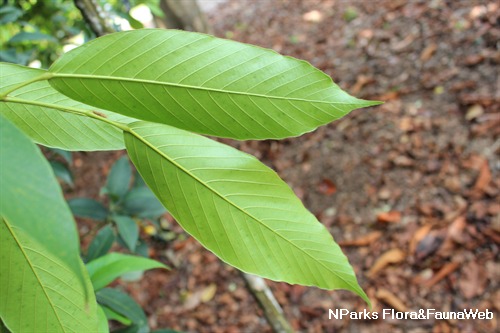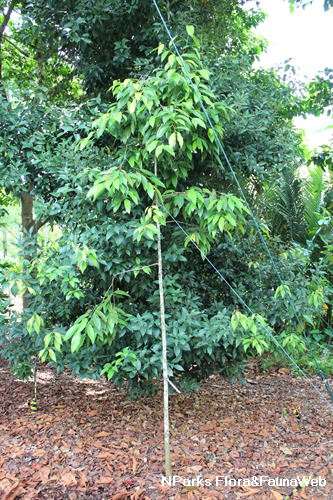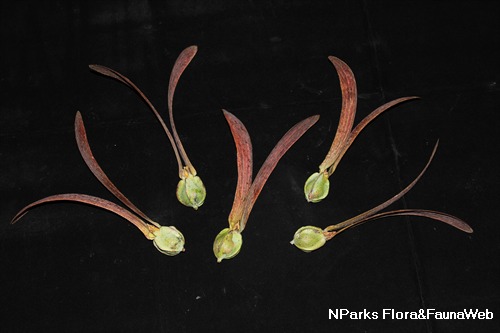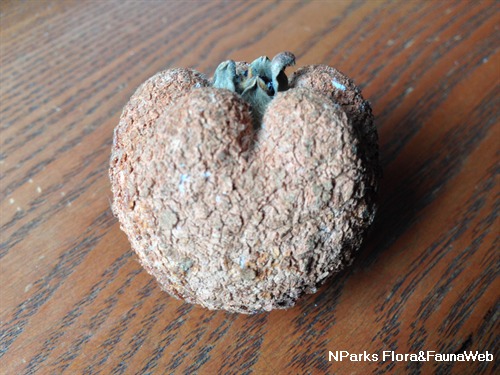
Back
Dipterocarpus chartaceus Symington
| Family Name: | Dipterocarpaceae |
| Common Name: | Keruing kertas, Keruing bulu, Getah |
Name
Classifications and Characteristics
| Plant Division | Angiosperms (Flowering Seed Plants) |
|---|---|
| Plant Growth Form | Tree |
| Lifespan (in Singapore) | Perennial |
| Mode of Nutrition | Autotrophic |
| Maximum Height | 40 m |
Biogeography
| Native Distribution | Peninsular Thailand and Peninsular Malaysia |
|---|---|
| Native Habitat | Terrestrial |
| Preferred Climate Zone | Tropical |
| Local Conservation Status | Native to Singapore (Critically Endangered (CR)) |
Description and Ethnobotany
| Growth Form | Dipterocarpus chartaceus is a large tree that can grow to 40 m tall with 4 m girth. |
|---|---|
| Trunk | Bark of Dipterocarpus chartaceus is greyish-brown. |
| Foliage | Leaves of Keruing kertas are ovate-lanceolate (8.5 – 19cm long x 4 – 9 cm wide) with 10 -14 pairs secondary veins. Petiole is about 2.5 – 3cm long. Stipules are slender (about 8 cm long) with yellow hairs. |
| Fruit | Fruit of Keruing kertas has 2 larger fruit calyx lobes (13 cm long and 3 cm wide) and 3 shorter ones (0.4 cm long and wide). The wings are prominently 3-nerved. |
| Etymology | Genus Dipterocarpus is from Greek words "dipteros" which means "two-winged" and "karpos" which means "fruit" and they refer to the character of the fruit. Species chartaceus means papery in Latin, with reference to the papery texture of the leaves. |
| Ethnobotanical Uses | Others: Resin can be extracted from Keruing kertas, which is used for varnish, caulking boats and illumination. |
Landscaping Features
| Landscape Uses | Parks & Gardens |
|---|
Plant Care and Propagation
| Light Preference | Full Sun |
|---|---|
| Water Preference | Moderate Water |
| Plant Growth Rate | Moderate |
Image Repository
Others
| Master ID | 29648 |
|---|---|
| Species ID | 3957 |
| Flora Disclaimer | The information in this website has been compiled from reliable sources, such as reference works on medicinal plants. It is not a substitute for medical advice or treatment and NParks does not purport to provide any medical advice. Readers should always consult his/her physician before using or consuming a plant for medicinal purposes. |







